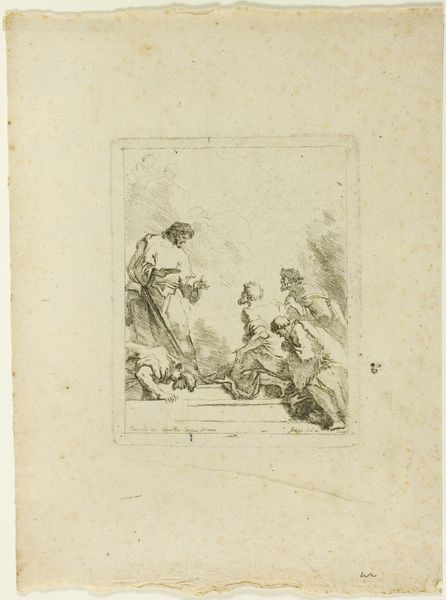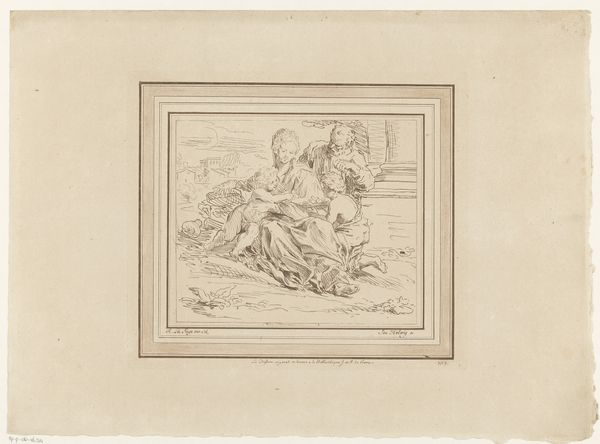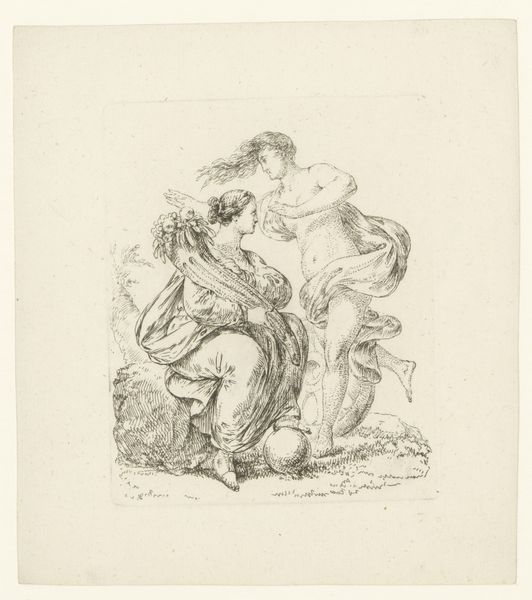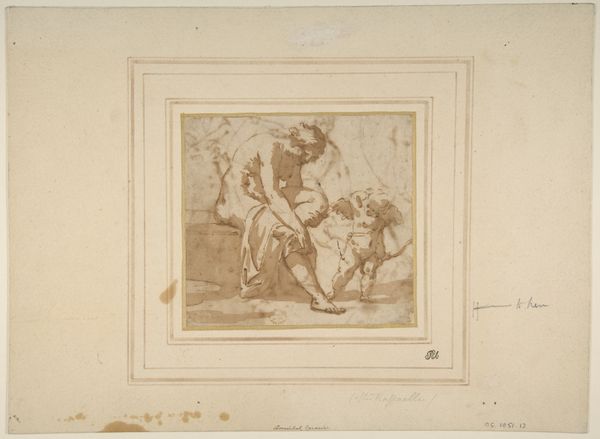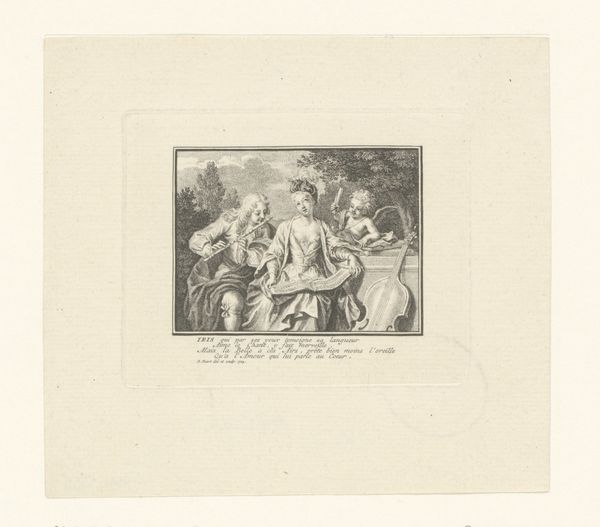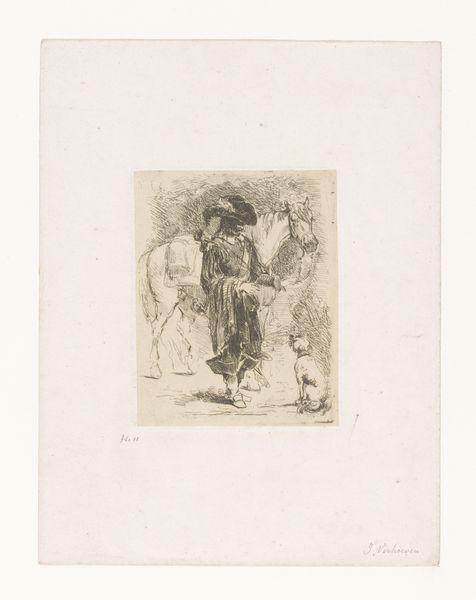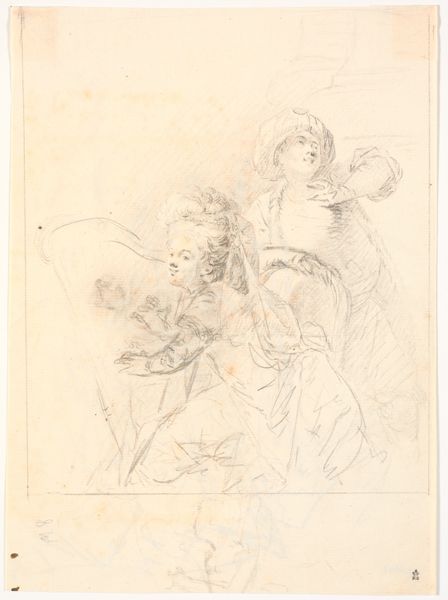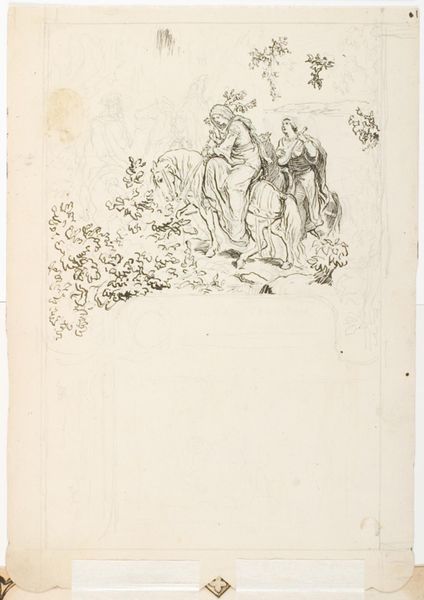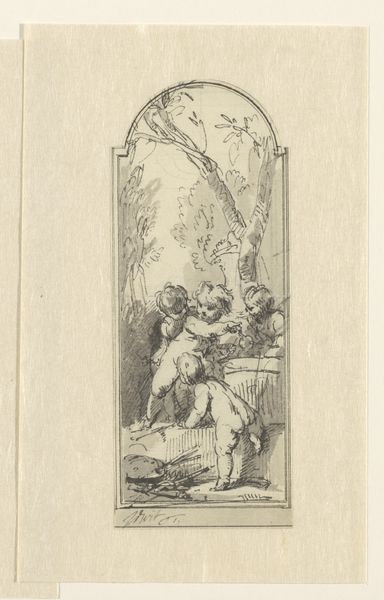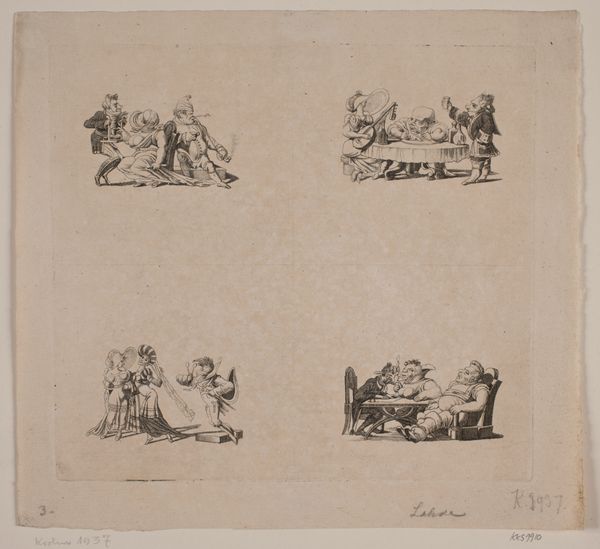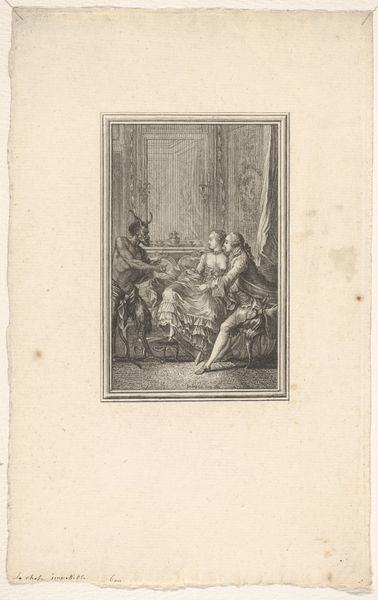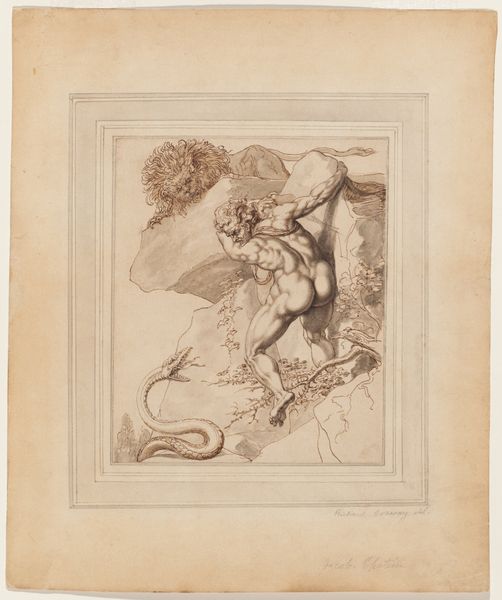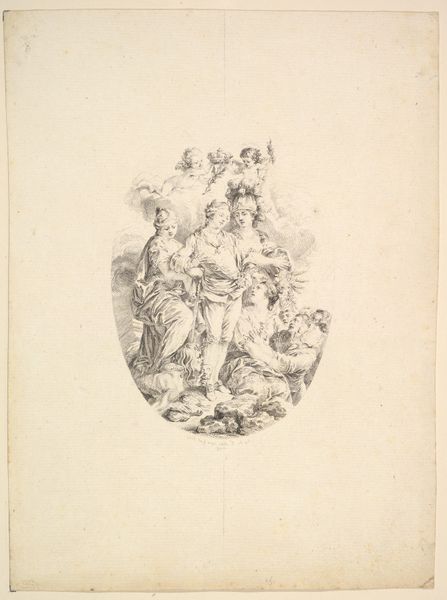
Dimensions: Sheet: 9 1/8 × 6 3/4 in. (23.2 × 17.1 cm) Plate: 4 7/8 × 3 5/8 in. (12.4 × 9.2 cm) Image: 4 1/2 x 3 1/8 in. (11.5 x 8 cm)
Copyright: Public Domain
Editor: We’re looking at Fragonard’s “Saint Luke,” likely created between 1759 and 1769. It’s an etching, rendered in ink. I’m struck by the apparent spontaneity, the almost scribbled lines that still manage to create such dynamic forms. What stands out to you? Curator: I see a very deliberate set of choices, even in those “spontaneous” lines. Consider the labor involved in etching - the careful preparation of the plate, the precise application of acid. Each line, no matter how quickly drawn, represents a considered action in a chain of production. How does this change your view? Editor: That's a great point! I was focusing on the visual effect, but now I'm thinking about the artist's workshop, the materials, the printing process. Were prints like these luxury items or more accessible forms of art consumption at the time? Curator: Exactly! The reproductive nature of prints made art available to a wider audience, challenging the elite status of unique paintings. Furthermore, consider the availability and the cost of materials such as ink, paper, and copper, then, in relation to similar luxury goods: Where do prints stand in this artistic food chain, so to speak? And how does that positioning influence the content itself, its themes and aspirations? Editor: So, seeing "Saint Luke" as an etching complicates its message; it's not just a religious image, it's a commodity circulating in a specific economic system. Curator: Precisely. The image itself – St. Luke, traditionally the patron saint of artists – participates in this discourse, self-reflexively commenting on its own mode of production and distribution. It acknowledges its role in the artistic marketplace. Editor: I never would have considered that. Thanks; I see the etching in a totally new light. Curator: And I think considering your initial read helps provide an important counterpoint as well. Thinking about it as simply an image also points to other avenues we can think about concerning materiality.
Comments
No comments
Be the first to comment and join the conversation on the ultimate creative platform.
